Do you know that mold has existed for several million years now? As a natural phenomenon that occurs nearly anywhere there is oxygen and moisture, it is no surprise to discover mold around your home or office inside walls.
So, how can you tell the signs of mold in walls? And do you know how to remove mold from inside walls? Read on to discover that and much more!

Mold will quickly grow inside your home's walls when the surroundings encourage survival. While various things cause mold to grow in walls, water leaks, high humidity, and massive condensation top the list. Here's more about that.
Mold will grow inside your walls if water leaks into the walls' interior spaces. For instance, leaks from your plumbing system will increase the moisture level and dampness inside your walls, promoting mold development and proliferation.
Premises that have been plagued with floods are a breeding site for mold. After the downpour, it might take several days or weeks for your home to dry completely. Meanwhile, your walls absorb lots of water, and the dampness gives mold a perfect space to thrive.
Poor ventilation in your space allows the moisture and humidity to gather in your home's walls and basement. Also, poor ventilation means that the condensation rate is high inside walls. Since mold only needs 24 to 48 hours to start growing, these conditions will have it spread quickly.
High moisture levels in the air (humidity) will cause the air to feel damp. Humidity levels between 55% and 60% accumulate a lot of moist and stagnant air, easily leaking into the walls, promoting the growth of hidden mold inside walls. This is quite common during the summer months.
Is mold inside walls dangerous? Yes, mold inside walls is detrimental to your well-being and results in health problems when not remediated on time. Mold spores trigger uncomfortable symptoms like skin rash, eye redness, runny nose, and sneezing. These symptoms can get worse among people with certain medical conditions like sinusitis.
Mold is also linked with allergies because of its toxic and irritating allergens (spores). With growing levels of black mold inside walls, you and your loved ones have a high risk of developing mold-induced infections like asthma, fungal poisoning, and hypersensitivity pneumonitis.
The primary difference between mold on walls and inside walls is the position and visibility. You can easily see the signs of mold on walls, like black spots and stains. Detecting mold inside walls is confusing to many, but the reality is if you notice mold signs on your walls, it indicates a bigger mold problem on the inside of exterior walls.
How do you tell if mold is inside walls? Whenever you suspect mold in walls, the mold symptoms will reveal whether it's mold or something else. But before that, physically assess your internal space for mold and detect what might be bringing out the mold issue.
You can confirm the presence of mold inside your walls through a physical and internal inspection. Check for water damage or visible signs of mold growth.
Also, inspect the inside of the walls, like the attic and insulation, for signs of mold growth. Smelling your electrical outlets like air conditioners for mustiness will also indicate if there's mold inside that might have spread to the walls. Temperature and humidity measuring devices will erase any doubts.
How to detect mold inside the walls of your house can be challenging because mold is not always visible. It's even more complicated if the mold has not developed enough to display signs on the walls.
It may take time for you to notice leakages in roof and pipes, giving the mold enough time to grow. You can tell the signs of spreading mold inside walls through the following:
Mold inside your walls will stress you, but it is not impossible to get rid of. There are two ways to remove mold from inside walls; doing it yourself or engaging an expert.
This is where you remove the moldy drywall, assess the situation, clean and treat the mold, encapsulate it, and rebuild the wall. However, DIY mold treatment is risky; you run a real risk of spreading the mold and compromising your health due to the mold spores and the toxic chemical treatments.
More so, it's easy to damage your home during removal and incur an extensive loss. Experts only recommend DIY if you are certified, experienced, and own the right tools for mold remediation.
Hiring professional assistance is the most recommended option for killing mold inside walls. At FDP Mold Remediation, we will help you remove mold hidden inside your walls with a guarantee of the best results. Here's our proven professional approach.
Moisture and oxygen are food for mold; they help it grow and thrive. Removing mold inside your walls without handling the moisture would not solve the problem. The water problem should be repaired to guarantee a good result. Our teams handle this in some areas, but not in all.
The next step is cleaning the infected area, especially on the nonporous materials. We use eco-friendly detergents and the HEPA filtering technique to clean and clear the air of airborne mold spores. For the porous materials, our professionals use friendly antimicrobial treatments to kill the remaining mold.
Finally, we remove the materials most affected by the mold, whether it's the insulation or drywall, so that you can have them replaced with new ones. You can choose to replace the drywall with mold-resistant alternatives to provide a long-term solution to the problem. A licensed contractor will help you with material sourcing and reconstruction.
Are you worried that the mold infestation will develop again? With the proper preventive measures, you will comfortably prevent recurrent mold infections inside your walls.
Emphasize the following:
You will often not notice when mold starts growing inside your walls. For instance, pipe leaks and moisture problems inside the walls are hardly noticed until they develop into severe problems. Regular mold inspection is recommended to spot the issue and its symptoms on time before mold spreads everywhere.
Cleaning your spaces around the wall or the exterior walls will help prevent mold inside walls. Make sure you use the right household detergents, then rinse and leave the walls to dry completely. Knowing how to clean mold inside walls also lessens moisture buildup. You will also spot issues early if you clean and inspect your walls periodically.
Controlling the humidity in your house with a dehumidifier, exhaust fans, or ceiling fans helps. Humidity control helps prevent moisture development inside your walls.
Proper ventilation will prevent moisture accumulation within your space, especially the internal structures. Pay attention to areas like your bathroom, bedrooms, and kitchen because this is where humidity and moisture levels are high.
Mold inside walls will make your home unsafe and uncomfortable to live in. Ready for professional mold remediation services? Whether in your residential or commercial space, we will restore your space and keep every room occupant safe with our professional mold removal services. We also provide solutions to help you prevent mold infestations in the future.
In addition, we offer professional mold inspection, mold testing, and a complete mold remediation package. It sounds like a good deal, right? Call us today at 877-421-2614 for a fast estimate and consultation on how to get rid of mold inside walls.



